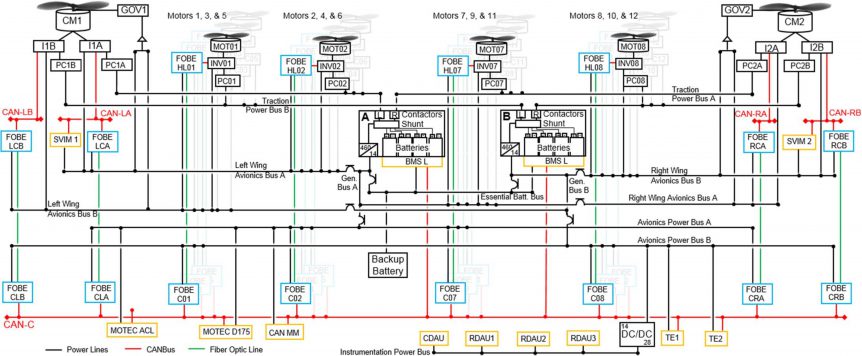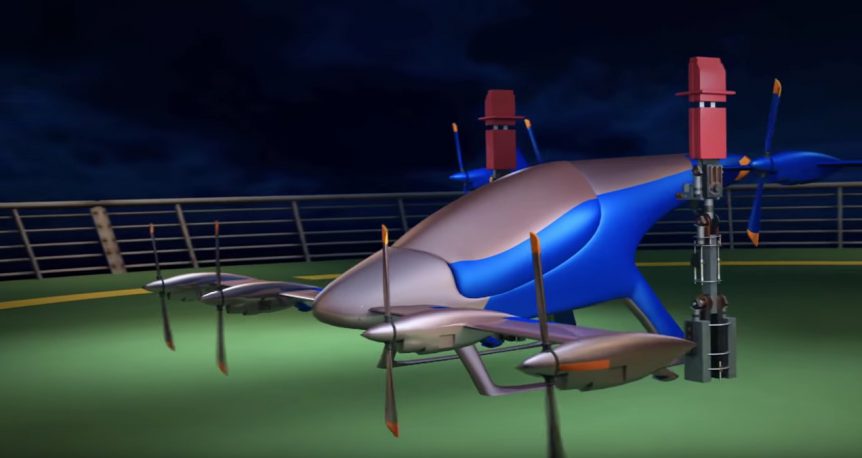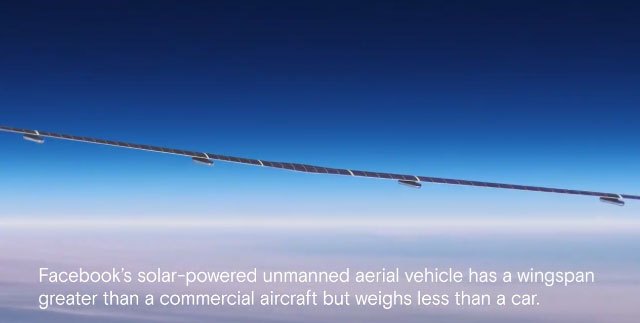NASA and several partner firms have been working on the X-57 Maxwell electric propulsion demonstrator for the past several years. It hasn’t been as easy as it looked at first. Encouragingly, NASA is sharing some of the hard lessons it has learned in the process, much like Elon Musk sharing many of his patents with the world. One of the hardest lessons involved the multiple battery packs, originally planned to be off-the-shelf units. A December 2016 test resulted in a thermal runaway, a situation in which one cell that overheats can self-destruct and cause adjacent cells to follow suit. This, as we’ve seen in Dreamliner incidents, can be dangerous and potentially deadly. Such fires are exceedingly well reported, with any Tesla incident overwhelming the press, which ignores the 174,000 car fires reported by the National Fire Protection Association in 2015, which resulted in 415 deaths and $1.2 billion in property damage. Electrified aviation will be even more critically examined if electric …
NASA’s Mark Moore Joins Uber
You must really be somebody when Fortune Magazine notices you’re taking a new job. Mark Moore is indeed somebody, and remarkably self-confident in leaving a 30-year NASA career to sign on to a startup – even if it is run by Uber. He will be Director of Aviation for the on-demand ride company, tackling the problems inherent in taking such services into the third dimension. His decade-long work in electric propulsion for aircraft has led him to conceive of some interesting possibilities for Personal Air Vehicles, a term he engaged early. His Puffin vertical takeoff and landing vehicle, for instance, seemed to use elements of Lockheed’s XFV-1 Pogo and Aerovironment’s Sky Tote – both tail sitters. Ben Rich’s book, Skunk Works, details the problems pilots “faced” while trying to land the Pogo on its tail lying on their backs and looking straight up. Moore’s design allowed the pilot to take off and land while standing upright, and then transitioning to …
A Quiet Air Force Spreading Commerce and Knowledge
Two years ago, Mark Zuckerberg, the head of Facebook, promised a far-reaching goal for his firm. ”Today, we’re sharing some details of the work Facebook’s Connectivity Lab is doing to build drones, satellites and lasers to deliver the internet to everyone. ”Our goal with Internet.org is to make affordable access to basic internet services available to every person in the world.” We reported on this activity almost a year ago, and provided technical details that are coming to fruition with the first flight of the Aquila drone, a large flying wing that looks a great deal like the Prandtl-D research vehicle designed by Al Bowers and a group of graduate students. A primary difference – Facebook’s machine has winglets or tip rudders to assist in directional control. The Facebook video shows the highlights, but the following video from the BBC gives more detail and insights from Jay Parikh, head of global engineering for Facebook. Note that the launch vehicle has additional motors …
EAS IX: JoeBen Pulls off a Hat Trick
JoeBen Bevirt, founder and head of Joby Aviation and Joby Motors , is obviously a workaholic, and not only gave a talk at EAS IX, but had an example of his Lotus unpiloted aerial vehicle at the AUVSI (Association for Unmanned Vehicle Systems International) conference in Atlanta, Georgia on the same weekend. Two weeks before that, his demonstration wing for the LEAPTech program was speeding across the desert at NASA’s Armstrong Flight Research Center (AFRC), Edwards Air Force Base in California. JoeBen told Symposium attendees all about his S2 personal aerial commuter and LEAPTech, a joint development with NASA. Part of the LEAPTech program has included building a truck platform for testing the 18-motor wing. This is a fascinating bit of engineering in itself. YouTube does not yet show a test run with the truck and wing, but this news item includes it here. LEAPTech (Leading Edge Asynchronous Propeller Technology) is a NASA Team Seedling Award under the Convergent Aeronautics Project of …
Powering Imagination in Seattle
Seattle’s Museum of Flight on Boeing Field will host a one-day event, Powering Imagination, an electric flight symposium organized by Erik Lindbergh, grandson of Charles and Anne Morrow Lindbergh. Presentations will be held in the William M. Allen Theater at the Museum, starting at 10:00 a.m. on Saturday, February 28 and ending at 5:00 p.m. Admission is free, but RSVP to cwilcox@museumofflight.org to guarantee a seat. Topics include an update on the NASA LEAPTech aircraft being designed and built by Joby Aviation and powered by Joby motors. This 20-motor (!) aircraft will achieve a high coefficient of lift from the motors that distribute thrust over the entire span. Eric Lindbergh will talk about the Quiet Flight Initiative, a multi-pronged approach to designing and crafting airplanes quiet enough to be flown over national parks, areas now off-limits to noisy overflights. This is one facet of Powering Imagination, the other two Electric Flight and Alternative Fuels. Erik promises video updates from Europe and an …
EAS VIII: Joby Motors – on Simple and Complex Airframes
JoeBen Bevirt, founder and CEO of Joby Aviation, Joby Motors, and related enterprises, has thought long and hard about the financial costs and lost productivity brought about by the daily automotive commute, a 1.6 hour per day ordeal for many in our urban centers. JoeBen and the Atlantic magazine agree that commuters squander 5.5 billion hours and 2.9 billion gallons of fuel annually, stuck in the fitful despair of slow or unmoving traffic, sharing only frustration and polluted air with their fellow motorists. JoeBen told attendees at the April Electric Aircraft Symposium that several years before, he had the seeming pipe dream of moving people by air in a single-seat, eight-motorm, vertical takeoff and landing, electric commuter aircraft that would take one 100 miles at 100 miles per hour for one dollar. The combination of Greg Cole’s Sparrowhawk and electric power focused too much on efficiency, according to JoeBen, and battery technology had not evolved to allow the practical outcome …
Three Electric Airplanes Fly at AirVenture 2013
Electric aircraft have flown for the last six years at the big Oshkosh AirVenture airshow. Randall Fishman started the movement in 2007 showing his ElectraFlyer trike, and then flew his ElectraFlyer C, a single-seater derived from the Moni motorglider the following year. He won the 2008 Stan Dzik Memorial Award For Design Contribution “for the installation of the Electric-Motor power train” and the Dr. August Raspet Award. Last year he displayed his ElectricFlyer ULS, a twin-boom pusher with soaring capabilities. Others have followed, with Yuneec cruising overhead in 2010, winning the Lindbergh Electric Aircraft Prize (LEAP) prize for the craft’s “significant commercial potential” and “compelling design.” Dale Kramer, flying his twin-Joby-motored eLazair around the ultralight circuit in 2011, showed the potential for electric motors on an amphibian. Sonex Aircraft showed its Waiex in its e-Flight Initiative area in the Innovation Pavilion, looking essentially the same as over past years. the company has noted several test flights since its late December, …
Electric Lazair Progress
During a visit to the International Vintage Sailplane Meet at Harris Hill, New York, your editor was fortunate to be a guest of Dale and Carmen Kramer, who graciously showed their home, once that of Glenn Curtis, “The Father of Naval Aviation.” Now the Hammondsport cottage (as in Glenn Hammond Curtis), which overlooks the lake where Curtis flew his early amphibians, is home to a high-tech cottage industry, with Dale creating battery monitoring systems, “brain boxes”, and other elements of his electrical power system for ultralight aircraft. He designs the schematic and printed circuit boards for the system, sends them off to a PCB manufacturer and hand mounts very small components on the finished circuit boards, a process that would normally use expensive “pick and place” machinery and wave soldering. His low-tech version of wave soldering takes place in a toaster oven. A table on the covered and shaded front porch overlooks the lake and holds stacks of water-jet cut …
World’s First Electric Amphibian
Just days after flying his electric Lazair for the first time, Dale Kramer attached a float, outriggers, and retractable landing gear to his ultralight craft, took off from the grass field near his home, and flew to a nearby lake to make his first water landings and takeoffs. He even managed to ridge soar the aircraft and stalk floating ducks. Having designed the Lazair 30 years ago, Kramer was heavily involved in the burgeoning ultralight movement, and over 1,200 of the twin-engined craft were built. Today, he’s taking a lead in creating a low-cost ultralight electric flyer, topping the considerable accomplishment with a true world first – a twin-motored ultralight electric amphibian. He uses a pair of Joby JM1 motors, monitored by Eagle Tree instuments mounted to a piece of wood that was part of Kramer’s house in Hammondsport, New York. The house, Kramer found after living there nine years, was once home to Glenn Curtiss, chief rival to the Wright Brothers …
Electric Gull Flies at Arlington
The annual fly in at Arlington, Washington was an electric landing zone for Mark Beierle’s Gull 2000, powered by his own design 20-kilowatt motor. The 36-coil, 42 magnet disk, weighing 16 pounds, is mounted on a truss arrangement behind the airplane’s high wing, and drives a ground-adjustable pusher propeller. Flying five half-hour demonstration flights during the half-week event accounted for almost half the six hours total time on the airplane so far. The airplane has a 74-Volt Rhino Lithium-polymer battery pack made up to 11 packs in a parallel/series arrangement. Beierle says this array, and taking voltage from the ends of each 3.7-Volt series pack, allows balancing of all 210 cells. Power is run through a 500-Amp Kelly controller, which weighs about 12 pounds: Beierle hopes to try a new Kelly unit which will be half that weight and less expensive. Battery protection is provided by circuits in the charger, which will be the same Kelly unit Beierle uses in recharging his …
- Page 1 of 2
- 1
- 2



